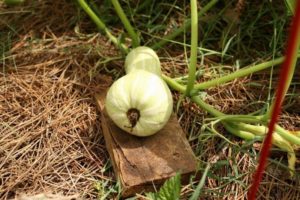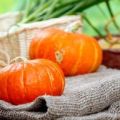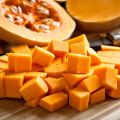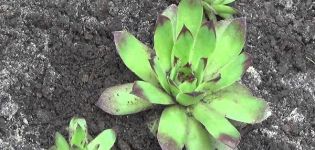How to determine the ripeness of a pumpkin and its ripening time for harvesting from the garden
Autumn is the harvest time for many vegetable crops. Experienced vegetable growers already know, and beginners are interested in when to remove pumpkin from the garden. If you overexpose a vegetable in the garden, or, conversely, rush to pick it, you may never recognize the ripe taste of the fruit.
Homemade canned food or culinary dishes are much tastier and more flavorful when made with well-ripened pumpkin.
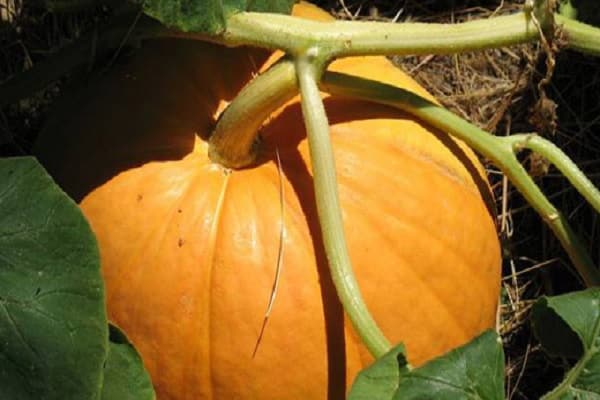
Pumpkin ripening time: it all depends on the variety
Each vegetable variety has its own growing season. Therefore, before planting a culture, you need to carefully study the characteristics and description of its variety. Information is often found on the seed package. In the same place, the manufacturer gives recommendations regarding the technique of growing and caring for the plant.
There are several factors that affect the timing of pumpkin ripening.
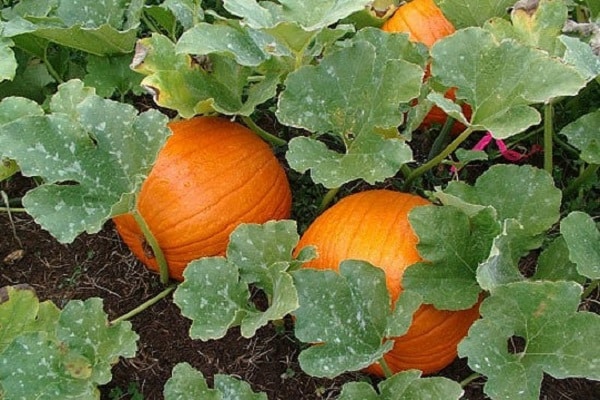
The seed variety can be divided into 3 types: early maturing, mid-maturing and late-maturing. Depending on this, the timing of the harvest is determined.
In the first group, the fruits ripen in late July or early August. They have a specific delicate taste and aroma. The rind is thinner, so the harvest does not last long. The growing season of a group of early ripening varieties lasts from 92 to 104 days.
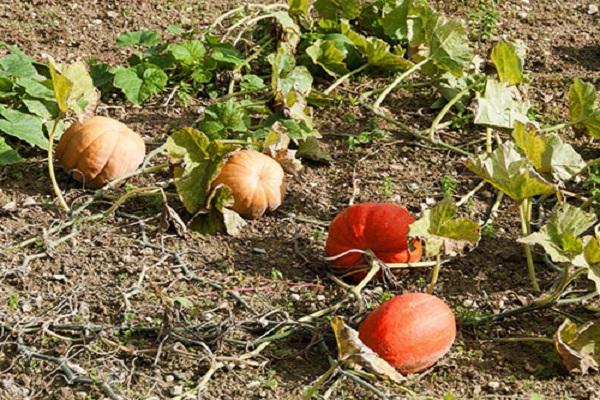
The second group includes mid-season pumpkin species. The fruits are larger, more dense, with a tough skin. They are stored for a long time, provided that they have not been frozen. Harvesting is carried out until the first minus temperature. The growing season for this group ranges from 110 to 120 days.
Late-ripening varieties are larger and can be stored for a long time, up to 6 months. The growing season for this group of varieties is about 200 days. This type of pumpkin can be harvested at the ripening stage. It perfectly picks up taste and juiciness when plucked. The characteristic color will tell you when to pick the fruits of late-ripening varieties. A light orange color is the first sign that a vegetable is gaining strength.

For large-fruited pumpkins, which require time to gain taste and juiciness, the harvest time can be extended. From September to mid-October, the fruits are still in the beds.
You need to remove the pumpkin from the garden on time. Retaining fruits on the stems, like freezing, also leads to rapid damage to the crop.
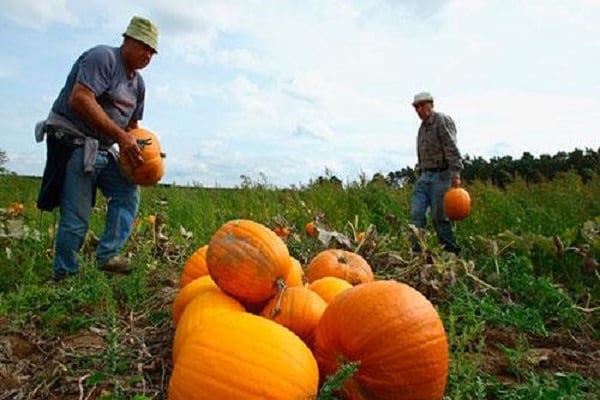
Signs of pumpkin ripeness: when to remove the pumpkin from the garden
Most pumpkin varieties have common signs of ripeness. These include the following indicators:
- You can pick a pumpkin if its stalk is dry and has acquired a wood structure.The size and thickness of the stalk depends on the variety and how large the vegetables themselves are. It is located at the junction of the fruit with the stem. As soon as the pumpkin has collected all the necessary substances and its growing season is over, the stalk begins to dry out and die off, turning into a hard, almost wooden tail.
- The characteristic sign of ripeness is the color of the peel. It takes on, depending on the variety, a light yellow or orange hue. Mid-season varieties, which include Butternat or Wax, do not change their color. They remain green or white even when fully ripe.
- In most varieties, ripening signs are primarily reflected in the density of the rind. It becomes so hard and durable that it is sometimes difficult to cut it.
- As soon as the pumpkin is ripe, it will begin to draw all the moisture and juices from the plant. The stems and leaves will gradually wither and dry out. This is a clear sign that the fruit can be picked.
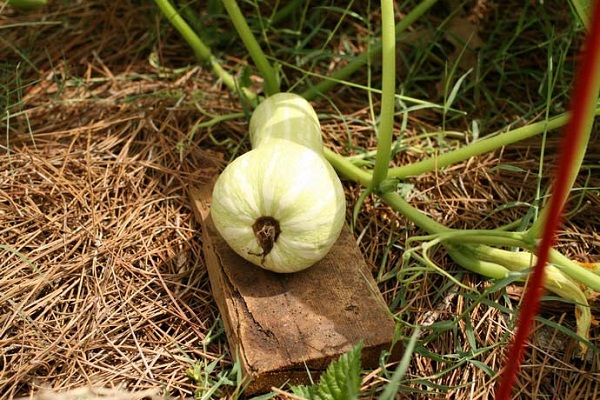
It is undesirable to store the crop with other vegetables and fruits in the same box. Some fruits release ethylene. This gas causes the pumpkin to deteriorate quickly.
Ripening pumpkin and proper storage
Gardeners often face a problem when the pumpkin is not stored for a long time. It is possible that the reason for this situation was the failure to comply with the conditions and requirements for storing the crop. To prevent this from happening, it is worth adhering to a number of rules:
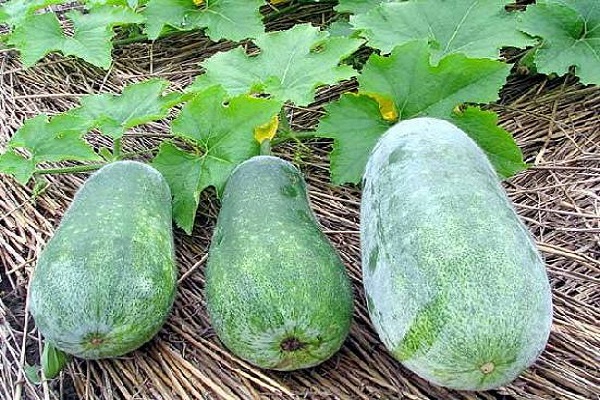
- Once the fruit has been removed for storage, it is taken to a dark room where there is no sunlight. Good ventilation in the basement or cellar is important. The vegetable does not tolerate high air humidity, so the room should be dry and fresh.
- You can count on long-term storage only by cutting off the fruits from the plant in time. Overexposed and unripe pumpkins are stored for no more than 1-2 months.
- An important condition is compliance with the temperature regime in the storage. It is necessary to ensure a constant temperature in the room within the range of + 7 ... 18 ° С.
- The fruits are laid out on a wooden surface. The main thing is that they do not come into contact with each other. During storage, it is necessary to periodically inspect vegetables for damage. The damaged copy is immediately removed from storage.
- If the pumpkin is spoiled by freezing, you will have to immediately start up it for cooking. It cannot be stored for a long time. Frozen vegetables quickly become unusable.
- Fruits, due to long-term storage, lose their taste, but this does not apply to nutmeg species. In these varieties, the pulp does not lose, but, on the contrary, gains taste and aroma over time, while maintaining juiciness and sweetness.
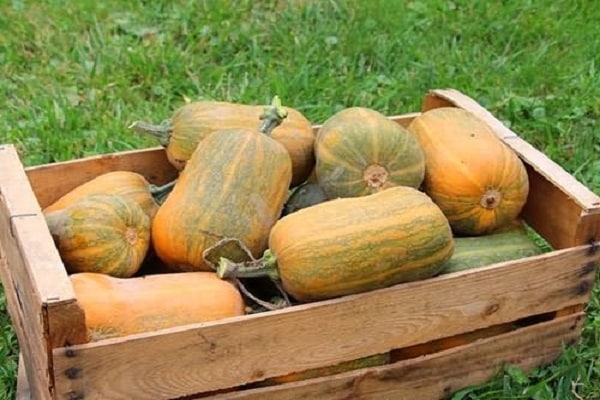
Cleaning according to the lunar calendar or according to the exact calculation
Experienced gardeners perform all work on the site according to the lunar calendar. Planting seeds for seedlings, moving seedlings into the ground and even harvesting have their auspicious days.
The moon has a great, invisible influence on all life on the planet. Plants are also sensitive to its phases.
Almost all gardening is based on the lunar calendar. But every year it changes, and the calculations are carried out in a new way.
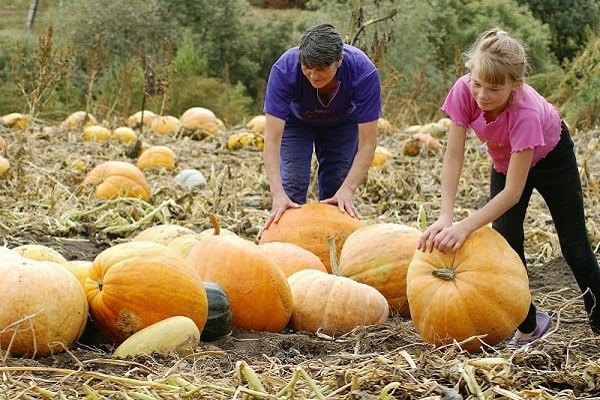
Under favorable conditions, pumpkins actively grow and gain their taste. A positive situation includes not only competently performed agricultural technology, but also the right days for planting seeds in the ground, in accordance with the lunar calendar, and a favorable period for harvesting.
You should not rely solely on the lunar phases, it is important to take into account the climate, season and weather when harvesting pumpkin. Depending on the climatic features of the region, all dates for harvesting fruits may be shifted.
Vegetable growers make an accurate calculation based on the growing period declared by the seed manufacturer.

Tips from a seasoned gardener
Experienced gardeners willingly share secrets as to when the vegetable should be harvested, it is necessary to harvest the crop before the first frost. It is better to choose a dry and sunny day for this, since it is important that the pumpkins are kept dry.
You need to harvest the fruits correctly. The stalk is as if scrolled around its axis, thereby sealing its edges. The pumpkin will retain its juiciness longer if the tail is unscrewed rather than cut off.
The variety of fruits is great and each variety has its own growing season.

